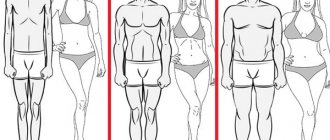In this article we will tell you:
- Stress concept
- Psychological theories of stress
- Types of stress conditions
- Psychological causes of stress
- Stages (phases) of stress
- Psychodiagnostics of stress/Symptoms of stress
- Methods for mild correction of stress
- Prevention of stress conditions
Psychology of stress - why is it important to know as much as possible about it? It's simple. The pace of life has become increasingly faster lately, and stress – both physical and psychological – is constantly growing. It is not surprising that being in a permanent state of stress has become almost the norm for many people.
Stress concept
Stress is a nonspecific response of the body to any change in conditions that requires adaptation. In simple words, some changes in the external environment require us to adapt. It got colder outside, warmer, we moved to a different climate, met other people - all this requires physical and mental effort from us. In general, this phenomenon can be described as stress. If adaptation occurs, it means there is stress.
The concept of stress is translated as load, tension, pressure, a state of increased tension, and it is so. But not every state of tension is stress. Only when you need to turn on the body's reserves for adaptation.
Stress is our internal mechanism of adaptation of the body and its way of survival.
If a person steps on glass with his heel, a stress response will begin in his body. That is, stress is an adaptation mechanism itself. The body begins to make some changes in order to adapt to this situation. He notices that there is glass in the heel, thickens the blood so that it begins to clot and prevent blood loss.
But if the system of reactions to stress and attempts to adapt to it remains turned on for too long, this leads to illness.
Stress is anything that disrupts our homeostatic balance. Homeostasis is the body’s self-regulation system, which allows us to maintain consistency within our systems. Usually here we are talking about maintaining body temperature, blood glucose levels, approximately the same blood pressure and various other processes within the body.
When stress somehow upsets our balance, the body, with the help of neurotransmitters, hormones, and the nervous system, tries to adapt to this and restore balance back.
If, in the case of animals, stress is only a violation of the homeostatic balance that already exists at a given time, i.e. This is a factor that is affecting right now, then everything is more complicated with a person. When a wild dog Dingo grabs a jerboa by the spine, this is a stress factor for him. In the case of a person, everything is different; it may also be the thought that the homeostatic balance may be disturbed, that is, this is not stress itself, not the stress factor itself, but thoughts about what could happen.
My main stressors | What are stressors?
Sure, you've heard of stress, but do you know the difference between "stress" and "stressors"?
Stressors are situations that are experienced as a perceived threat to a person's well-being or position in life, where the task they are dealing with exceeds the resources available to them.
When a person encounters stressors, the body's stress response is triggered and a series of physiological changes occur that allow the person to fight or flee.
If this formulation sounds like stress, it's because sometimes when people talk about "stress" in their lives, they're really talking about stressors; Stressors lead to the body's stress response and the experience of stress. Basically, it is important to remember that stressors cause stress.
Psychological theories of stress
For the first time in 1915, American psychophysiologist Walter Bradford Cannon spoke about a condition that is now associated with the concept of stress, and called this reaction “fight or flight”. And he even described this phenomenon in the book “Body changes during pain, hunger, fear and anger.” The year 1915 can be considered the beginning of the European and American approach to this topic.
We recommend
“Nutrition for a healthy lifestyle: healthy foods, life hacks, menus” Read more
However, our compatriots found themselves on the same topic in the same years, and at the Military Medical Academy in St. Petersburg, Professor Korenchevsky in 1913 already described the adaptation syndrome and said that it is not a pathological, but a physiological reaction to cell damage, tissues, damage to some external environment.
The Austrian doctor Hans Selye graduated from the Medical University of Prague. Having moved to Canada, he studied the effects of the secretions of hormonal glands, which he obtained by crushing organs isolated from animals and injecting them into mice (not hormones at that time, because they were not isolated in their pure form).
He noticed a very interesting thing: no matter what hormone extract he injected into the mice, the reaction was very similar. There is a legend that one day he made some kind of technological mistake and forgot to untie his experimental mice and left them overnight.
And those mice that were injected with substances the day before and those that were not injected gave the same reaction in the form of ulceration of the gastric mucosa. The next day, some of the experimental subjects even died. And that’s when he first spoke about the general adaptation syndrome. Actually, this was the beginning of the story of stress.
Selye made very interesting conclusions that in fact only the intensity of the need for restructuring or adaptation matters. And the stimulus itself and the changes that led to the formation of this adaptation syndrome practically do not matter. The second conclusion that Selye made is that adaptive energy is available in limited quantities, given from birth.
Later, the American researcher Goldstone in 1952 entered into a debate with Selye and began to say that adaptive energy can be produced regardless of how much of it was given to the body at birth. It, of course, decreases in old age, but can remain in the form of adaptation capital.
Gradually, this topic began to develop from the organismic and cellular concepts, with which Selye began, into the social concept. From one experiment on mice, entire directions in biology, medicine, sociology and even politics related to the topic of stress have developed.
Psychological causes of stress
Stress can have a number of causes: biological, chemical, physical and, of course, psychological. With the latter, things are not easy. The psychological causes of stress are so diverse that it is simply impossible to list them all. Each person is unique: his way of thinking and habitual patterns of behavior together give a unique picture of his personality and a set of probable reactions to stressful situations. There are a lot of such reactions.
Stress is caused by internal and external problems
. External are various life situations that a person has the ability to control. These could be financial difficulties, relocation, difficulties at work or in your personal life, etc. Internal causes of stress arise in the depths of the human mind and often have nothing to do with reality; the person himself invents them. This may be due to constant blues, a pessimistic attitude, unfulfilled desires, lack of self-love, self-esteem, and self-rejection.
Psychology identifies eight causes of stress, which are the most significant for a person and have the greatest impact on him.
- Death
. When a loved one passes away, few people can maintain their presence of mind and continue to live a normal life. This is the most powerful psychological cause of stress. Anticipation of death (for example, of a sick relative) is also a cause of powerful emotional stress.
- Finance
. For a huge number of people, financial difficulties are the main cause of stress.
- Lack of self-expression
. Most people strive to express their own “I,” but not everyone can do this.
- Lack of control over the situation
. This can concern both your own life and the lives of loved ones. The inability to control everything weighs on some people and plunges them into a state of stress.
- Disease and insecurity
. Fear of getting sick, experiencing pain, fear of death - all this leads to a loss of peace of mind, a person ceases to feel safe.
- Job
. For a huge number of people, work is a powerful source of stress. Difficult responsibilities, management pressure, difficult clients - all this keeps you in suspense, forces you to constantly think, analyze, and make plans.
- Friends and loved ones
. Communication with loved ones, relatives, and friends is always emotionally charged, which means it can provoke stressful situations.
- Family
. If things are not going smoothly in relationships with family, a person is unlikely to feel comfortable.
We recommend
“Physiology of stress and ways out of it” Read more
Any event can serve as a starting point for stress. Both women and men can become hostage to their psychological difficulties. It is important to remember that the primary task in a situation of constant emotional stress is to find out the cause of the uncomfortable state. By eliminating it or looking at the situation from a different angle, a person begins to feel much better. Without this, life can turn into a constant battle with windmills.
Symptoms of stress
How to assess a person’s condition when maladjustment has already set in, and when you need to start worrying and give some recommendations? It is important to understand whether stress has set in or not yet. Let's talk about diagnostic methods.
- By appearance
The person has puffiness, watery eyes, slightly bulging eyes, may be sweating, may have sweat on their face, and may be malnourished or overweight in what is known as chronic distress. The presence of these criteria may indicate that a person is in the first phase of stress.
- For somatic complaints
A person complains about his health. He can talk about high blood pressure, which increased suddenly after some event or experience. He may complain of a sudden rapid heartbeat, shortness of breath, constipation, a feeling of bloating, pain in the middle under the ribs, or a sharp increase in appetite, a feeling of insatiability - “I can’t get enough, I eat, I eat, but I feel like I’m not getting enough.”
Signs of stress can also include frequent respiratory viral infections, the urge to urinate, episodes of urinary incontinence that suddenly begin to occur after events or experiences, decreased erectile function in men or sexual desire in women, pain in muscles and joints.
- By behavior
Based on behavior, we will notice some desire to reduce the area of support; the contact area is a manifestation of post-traumatic stress disorder.
“You-statement” is very typical for a person who is in a situation of stress and physical trauma as well.
- Family history
In the family system, a person who has asked for help may find out that there are suicidal people - people who have committed suicide. Perhaps a person will say that he was not breastfed at all or that his mother gave up breastfeeding early. This is a family history factor that leads a person to tend to react with distress to external circumstances. This is prematurity - the more severe a person's history of prematurity, the more prone he is to distress reactions.
A sign of stress may be the presence of a dysfunctional family in which violence is practiced, alcoholics and drug addicts, people who have been in prison. These are panic disorders in the client or his family members.
- Predisposing personality traits
This is hyper-responsibility, pedantry, so-called perfectionism - the desire to do some action perfectly, this is some kind of mental rigidity - an unwillingness to adapt to circumstances, a desire to do it your own way, to insist on your own. This is alexithymia - the inability to understand, express feelings and basic anxiety.
- Mental complaints
This is a changeable mood - from irritability and anger to complete apathy, the feeling that nothing interests me.
These are insomnia, impaired memory, attention, anxiety higher than in usual conditions, the appearance of panic attacks, asthenia, when you don’t have enough strength for some basic actions, you don’t want to get up, drink water, brush your teeth, or go to work. This is hyperinhibition, when a person suddenly slows down and stops reacting in the usual way to familiar situations. And these are psychotic breakdowns, when suddenly a person begins to get offended, cry, scream, swear, which was not typical for him.
- Events
In general terms, these are events associated with changes in life. Here it is important to understand what is important for a person and what is not so important, what kind of event can throw him out of balance so much as to cause stress.
Chapter 2. Family life cycle
The main task of every family is to promote the development of its members. All families must perform some basic functions, namely providing shelter and food, managing developmental tasks (including individual and family growth), and managing crisis tasks in the event of illness, death, or the birth of a disabled child. (Carter & McGoldrick, 1980).
The first detailed description of the family life cycle from a systems perspective appeared in Jay Haley's (1973) book, Unconventional Psychotherapy. He described Milton Erickson's psychotherapeutic techniques as they were used throughout the six stages of the family life cycle, emphasizing the fact that symptoms most often arise at the transition points from one stage to another. Betty Carter and Monica McGoldrick (1980) later published a popular book entitled The Family Life Cycle: A Framework for Family Therapy. Carter and McGoldrick suggested that problems arise as a result of an interruption in the natural flow of the family life cycle, and the goal of therapy is to return the family “to normal.” The book provides an overview of the family life cycle and makes suggestions for clinical work with families at each stage of development.
Rice. 2.1. Horizontal and vertical stressors
One of Carter and McGoldrick's main contributions is their definition of the nuclear family as a three-generation system that responds to pressures arising from dynastic tensions and transitional phases of development. Carter and McGoldrick (1980) used vertical and horizontal axes to describe the interaction process in their model (see Figure 2.1). Anxiety is transmitted vertically through generations through the creation of emotional triangulation, family expectations and myths. In addition, anxiety is transmitted horizontally through changes in the life development cycle. Developmental stresses are categorized as predictable (such as leaving home or marriage) and unpredictable (such as illness, job loss, or death). Stress of a certain intensity, transmitted along both axes simultaneously, often leads to a crisis. Below is a case study illustrating the relationship between the horizontal and vertical axis of stress.
A 40-year-old single man consulted a family therapist due to severe depression. It turns out that he recently lost his mother; father died ten years ago. The patient always felt the need to please his mother. He held a professorship at a major university and was a recognized international authority in his field. The patient was involved in a "triangle" of conflictual relationships between mother and father, while continuing to maintain a close relationship with his mother as an adult. He never married, explaining this by the fact that he could not find a woman as good as his mother. The woman he dated before his mother died had recently divorced. The mother silently approved of her son's choice ( vertical stressor ), considering his girlfriend a suitable replacement. Soon after the mother's death, dynastic expectations became too onerous and a relationship breakdown ( horizontal stressor ) ensued. At this point, vertically directed stress (the obligation to marry a certain woman to please the mother) intersected with horizontally directed stress (the unexpected loss of both the mother and the intended bride), which led to the development of depression and disintegration of the system.
Modern families experience much more pronounced stress on both axes than past generations. The rise in divorce rates, the women's rights movement, and the sexual and technological revolution have a profound impact on families as they move through the stages of their life cycle. Often, job loss or divorce accelerates the crisis, forcing family members to seek help. However, when working with a family in crisis, a psychotherapist should focus not only on the symptom or patterns of the current interaction, but also on those patterns of relationships that have been inherited from previous generations - because these patterns may be of utmost importance for the current crisis.
The chapter focuses largely on predictable stages in the development of the American family. Particular attention is paid to the characteristics of the family life cycle, determined by belonging to a particular ethnic group or socio-economic class. It should be borne in mind that family traditions and patterns of interaction in different sociocultural groups can vary significantly.
The first stage of the family life cycle begins with marriage and continues until the birth of the first child. At the beginning of the corresponding section, we are talking about an adult who does not yet have a life partner, but feels the need to separate from his parental family . At this stage, the main role in socialization will already be played by peers, relationships with whom become closer. Before marriage, both future spouses must separate themselves completely from their families of origin. The role of a son or daughter now becomes secondary to the role of a husband or wife. Newlyweds should agree on boundaries with extended families, relatives and friends. In addition, many more prosaic problems must be resolved, for example, discussing the distribution of household responsibilities.
At the second stage, the family must reconsider its relationships and existing rules, taking into account the interests of the children. In connection with the emergence of new roles for parents and grandparents, relationships with the extended family are also subject to revision. Over time, parents establish interpersonal boundaries to ensure the child's safety and parental authority, while still maintaining the need to promote the child's growth.
The third stage begins when the first child enters school and lasts until the last child reaches puberty. At this stage, parents will have to distribute responsibilities related to the school. Who will help the child prepare lessons? Who will take the trouble to resolve school problems? Children will have to learn to establish horizontal (in communication with peers) and vertical (with teachers) connections. At this point, it may be necessary to make certain changes to the family system to allow the mother to start working again or find another occupation.
The family is considered the family of an adolescent from the time the eldest child reaches puberty. Depending on the number and age of children, this stage may overlap with the previous or subsequent stages. In one form or another, the teenage stage lasts until the last child leaves home. Parents should constantly change their relationships and rules, modify family boundaries, so that the teenager can enter and leave the family system if desired. At the same time, the parents themselves at this time are faced with problems and emotional experiences known as a midlife crisis. Successful overcoming of problems at this stage is largely determined by how the problems of communication and delineation of family boundaries were solved at previous stages of the family life cycle.
As developmental tasks are solved, the family becomes a “launching pad” for the mature child. It is at this stage that parents and children ideally strive for increasing independence from each other. This is the longest stage because modern families have far fewer children than previous generations and life expectancy has increased markedly (Carter & McGoldrick, 1980). Parents should establish adult relationships with their children and reconsider their own marital relationships without children. Spouses experience significant stress when they are left alone for the first time in 20-25 years. At the same time, there is a need to change the routine of life, take up your own career, etc.
A family that has largely fulfilled its parental function is faced with the problem of age-related deterioration in health. Spouses will have to re-evaluate their lifestyle and find opportunities to improve it. At this stage, family members will have to face the loss of a spouse, a decrease in vitality, the threat of old age and death, both their own and those of loved ones.
This chapter is devoted to a detailed consideration of each of the above stages of the family life cycle, and the last section touches on the stages of development of families formed as a result of remarriage. Particular attention is paid to tasks that require mandatory solutions for the successful development of the family.











